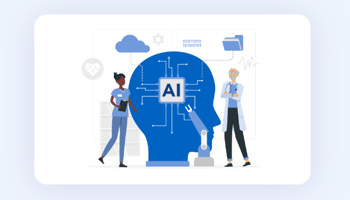Revolutionizing Medical Imaging: The Power of DICOM Solutions
In the ever-evolving landscape of medical imaging, DICOM (Digital Imaging and Communications in Medicine) stands as a cornerstone technology, revolutionizing the way medical professionals acquire, store, and share images. Short for Digital Imaging and Communications in Medicine, DICOM has become indispensable in modern healthcare settings, offering interoperability, efficiency, and enhanced patient care. Let's delve into the world of DICOM solutions and explore their profound impact on the medical field.
Understanding DICOM: A Foundation of Interoperability
DICOM serves as the universal language of medical imaging, enabling seamless communication between different imaging devices and healthcare information systems. This standardization ensures that medical images and associated data can be accessed, exchanged, and interpreted across various platforms, regardless of the manufacturer or imaging modality. Whether it's X-rays, MRIs, CT scans, or ultrasound images, DICOM facilitates the integration of diverse imaging technologies into cohesive workflows, streamlining diagnostic processes and enhancing collaboration among healthcare professionals.
Key Features and Benefits of DICOM Solutions
1. Interoperability Across Systems and Devices
DICOM's interoperability eliminates the barriers associated with proprietary image formats, allowing medical facilities to integrate disparate imaging equipment into unified networks. This seamless connectivity enables healthcare providers to access comprehensive patient data and imaging studies from a single interface, enhancing diagnostic accuracy and treatment planning.
2. Efficient Data Management and Storage
By standardizing image acquisition and metadata, DICOM solutions optimize data management and storage processes within healthcare institutions. DICOM-compliant PACS (Picture Archiving and Communication System) enable centralized storage of medical images, facilitating rapid retrieval and retrieval. Additionally, DICOM incorporates robust security protocols to safeguard patient information, ensuring compliance with privacy regulations such as HIPAA.
3. Enhanced Image Quality and Consistency
DICOM standards encompass not only image acquisition but also parameters for image display and transmission, ensuring consistent quality across different viewing platforms. This uniformity minimizes discrepancies in image interpretation, allowing radiologists and clinicians to make confident diagnostic decisions based on accurate and standardized imaging data.
4. Streamlined Workflow and Productivity
By automating tasks such as image acquisition, storage, and distribution, DICOM solutions streamline workflow processes in radiology departments and imaging centers. With DICOM-enabled modalities and PACS, healthcare providers can expedite image analysis, report generation, and consultation, leading to improved operational efficiency and reduced turnaround times for patient care.
The Future of DICOM: Innovations and Advancements
As technology continues to evolve, so does the realm of DICOM solutions. Emerging trends such as cloud-based imaging, artificial intelligence, and 3D printing are reshaping the landscape of medical imaging, offering new avenues for diagnosis, treatment planning, and medical education. By embracing these innovations, healthcare organizations can harness the full potential of DICOM to deliver personalized, precise, and efficient patient care.
Conclusion
In conclusion, DICOM solutions represent a paradigm shift in medical imaging, offering unparalleled interoperability, efficiency, and quality in diagnostic workflows. From facilitating seamless communication between imaging devices to optimizing data management and storage, DICOM continues to drive innovation and transformation in healthcare delivery. By leveraging DICOM standards and embracing technological advancements, healthcare organizations can unlock new possibilities for diagnosis, treatment, and patient outcomes in the digital age.


